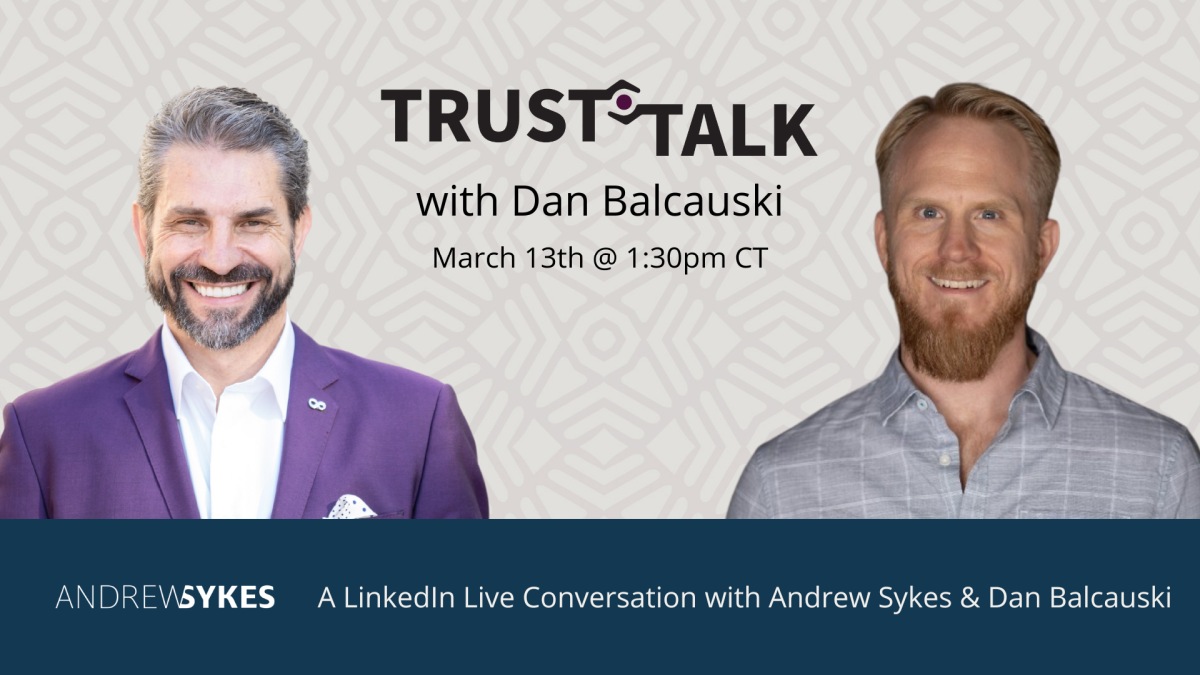
Andrew Sykes, CEO of Habits at Work, is a master of trust and coaches others on how to build trust in record time. It was my pleasure to join him on a recent episode of his LinkedIn Live series, Trust Talk. We had a blast and touched on a lot of intersections between Sales, Pricing, Trust, and Risk that I don’t often get to cover in other venues.
In this episode of Trust Talk, you’ll learn:
- The three ways to grow a SaaS business
- How CEOs can bring data they can trust into the SaaS pricing process
- How a buyer’s trust affects the price they are willing to pay
- How CEOs can change prices without breaking trust
- and much more
Catch the replay on LinkedIn!
Notable Quotes from the Episode
Why is monetization ignored at the expense of acquisition or retention? When a COO gets the bill for their AWS infrastructure every month, that’s a real hard cost. They might say, “Oh my God, we’re paying way too much. We’ll have engineers make our services more efficient, or maybe we need to in-house some of the stuff we’re paying for from an external provider.” That’s something they can really see.
Let’s say our costs are x. So we’re going to charge 10x. That, at least, will keep the lights on. But that obviously creates a whole bunch of problems because customers don’t care about your costs. I’ve never bought a piece of software and asked, “How many engineering hours did it take to build this?” because I don’t care. That’s completely irrelevant to me.
Cost-based pricing seems very scientific. The CFOs love it because it’s a spreadsheet with costs and a margin. But at the end of the day, it’s highly qualitative. The margin you put in for your desired profit is a judgment call; it didn’t get handed down on a stone tablet that the market said, “You, sir, get an 80% margin because the SaaS gods have designated you as worthy of an 80% gross margin.” No, that was just something you picked. So while it seems quantitative, it’s still qualitative.
Customers do realize that prices for things do change. Now, there’s an argument in the SaaS pricing world at the moment. Some people may have a theory; they’re calling it “SaaS inflation,” saying, “Look at all the SaaS products as a basket; over the last several years, pricing has gone up 500%.” The problem is, if we’re going to have an inflation argument, I’m selling an orange. The orange I bought seven years ago was an orange; the orange I’m buying today is an orange; it hasn’t changed. It’s the same orange. The SaaS product has grown in value over time.
For the purposes of argument, Andrew, I’m trying to convince you to buy my software, and I say, “We see that our customers are able to increase their revenue by 100% after year one.” If you trust me, that 100% will be mostly your perceived value of what you think the value of the software is, and therefore influence your willingness to pay because now you’re doing the calculations. You might think, “Okay, 100% revenue increase, so this price they’re trying to charge is reasonable.” If, however, you don’t trust me, you might think, “Well, I’ve heard these vendors say this before. I think it will help me increase my revenue, but I will put a risk discount of 90% on their claim.” So, it will help you increase your revenue by 10%, which would still be better than nothing and would still help you in your organization. But now the price I’m telling you I will charge is way out of line.
The way I think about fairness is whether our pricing and value are in line. Are we sharing value in a balanced way? This is not a zero-sum game where I win and you lose. The cardinal rule of fairness in pricing is not to increase your profit at my expense.
Want more B2B SaaS pricing and packaging insights? Follow Dan on LinkedIn and Twitter.
